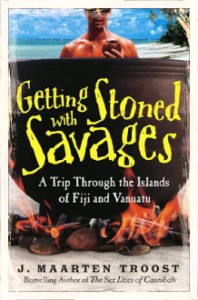 In Life in a Whirlwind of Numbers: 26 Years of OCD, David William Dahlberg shares his painful and often overwhelming life with OCD (Obsessive-Compulsive Disorder).. What made David’s condition even more tragic is that his condition went undiagnosed until well into his adulthood.
In Life in a Whirlwind of Numbers: 26 Years of OCD, David William Dahlberg shares his painful and often overwhelming life with OCD (Obsessive-Compulsive Disorder).. What made David’s condition even more tragic is that his condition went undiagnosed until well into his adulthood.
Triggered by a distressing event in his early teens, Dahlberg is tormented by consuming images and frightening scenes that won’t go away. He develops ritual behavior that he repeats over and over again to expel the tormenting images. Math was an easy subject for Dahlberg, but numbers both triggered his phobias and played into temporarily abating them by numerically ritualizing common actions. With a complicated system of calculations, he determined which numbers, or combination of numbers, were “good” and which were “bad.” Even going to bed would sometimes take a half hour or more, taking his feet off the floor a prescribed number of times, coinciding with the clock.
His condition began affecting his school work. He was a bright, musically talented boy, but, left on his own it would take an uncommonly long time to complete his lessons, obsessing over a phrase and repeatedly writing it. Often socially withdrawn, he would infuriate teachers and other students with inappropriate comments. Studying by himself seemed impossible; he couldn’t stay focused on the task at hand. Although he could concentrate on music while in band or orchestra, when alone he found himself repeating the same passage over and over again, obsessed with doing it the “correct” number of times.
It became clear, especially in later years looking back, that when he was in a classroom or otherwise around people he could hide his irrational fears, or at least he wouldn’t act on them when he could be observed. But when alone his time and energy were spent trying to dispel the persistent images.
Throughout his school and college years, Dahlberg struggled with OCD, while all this time his condition went undiagnosed. He had never even heard the term Obsessive-Compulsive Disorder. In addition to having to make his rituals in certain numeric order, for years he suffered from sleep deprivation. He was married a number of years before a crisis occurred in which he sought professional help. It was then that he learned his condition had a name: OCD.
Life in a Whirlwind of Numbers is a well-told story about the all-consuming, debilitating affects of OCD. I admire the author’s honesty and courage in discussing his often painful and tormented life. He leaves the reader with hope that diagnosis and treatment are available, as are medications to bring relief. I recommend this enlightening book to anyone interested in learning more about obsessions, and especially to those who suffer from the affects of this condition.


 teenagers who meet at a summer camp for the arts, form a strong bond, and call themselves “The Interestings.” Some of the teens come from wealthy families, some are there on scholarship. To them it makes no difference: they form life-long friendships that will endure through decades. That is, most of them. Some will follow different, even dangerous paths.
teenagers who meet at a summer camp for the arts, form a strong bond, and call themselves “The Interestings.” Some of the teens come from wealthy families, some are there on scholarship. To them it makes no difference: they form life-long friendships that will endure through decades. That is, most of them. Some will follow different, even dangerous paths.






